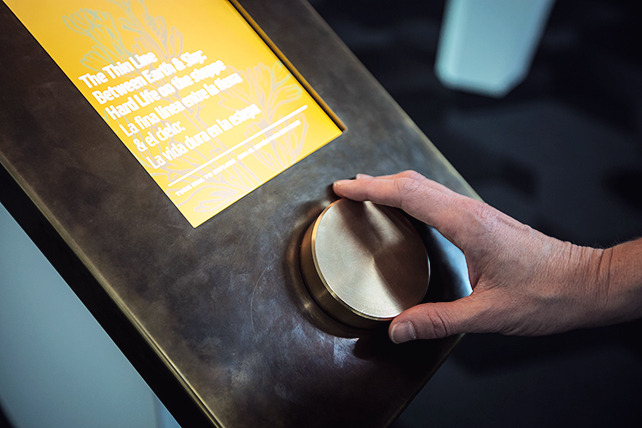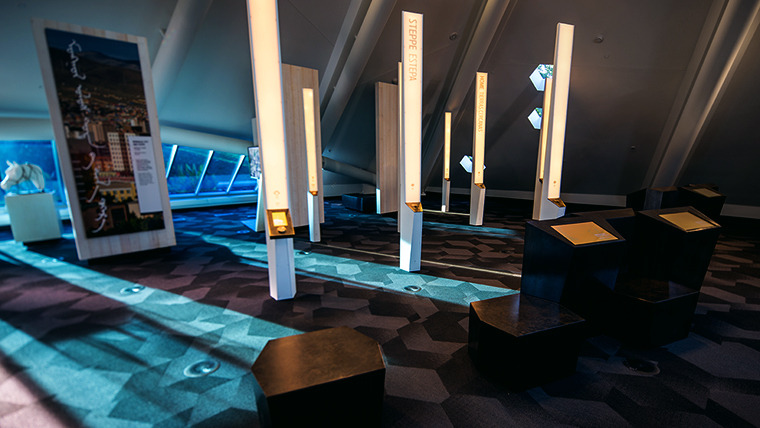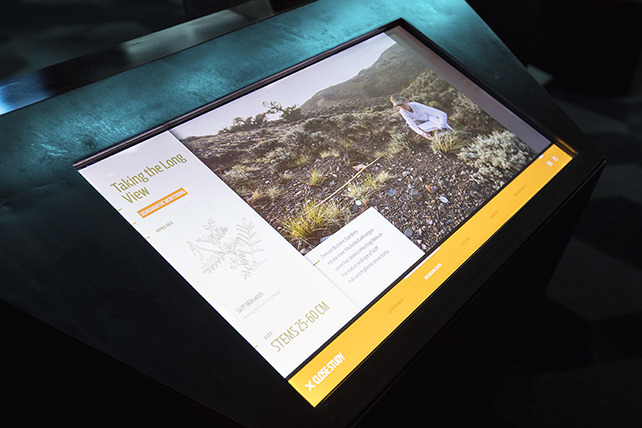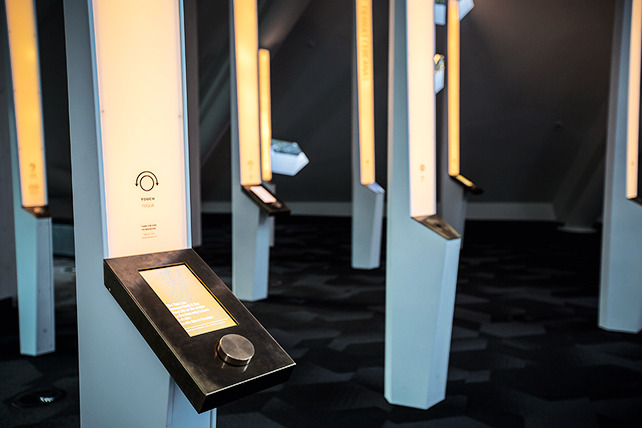The Land Nearby: Steppe
Haptic pylons encourage users to zoom in on a particular story, mimicking the movements of a scientist at a microscope.
In the second zone of the exhibit, visitors turn their attention from the state as a whole to the particular environment of the Denver area: the steppe. The stories in this area reveal the hidden biodiversity of the steppe’s rolling grasslands.
A boulder-shaped table hosts three interactive touchscreens where visitors can learn about the scientific research being carried out at the Gardens and get a close-up look at the plants upon which this research is focused.
Each of the six haptic pylons throughout the exhibit focuses on a single story, from the adaptations of steppe plants to the beneficial nature of fire in the landscape. Breaking away from the traditional touchscreen, these individual stations allow the visitor to control the story using a bronze dial. The exhibit’s primary materials—bronze, steel, glass, wood, and acrylic—were selected for their dynamic qualities; they will change in color and appearance with time, a reflection of the many visitors who have touched them.



